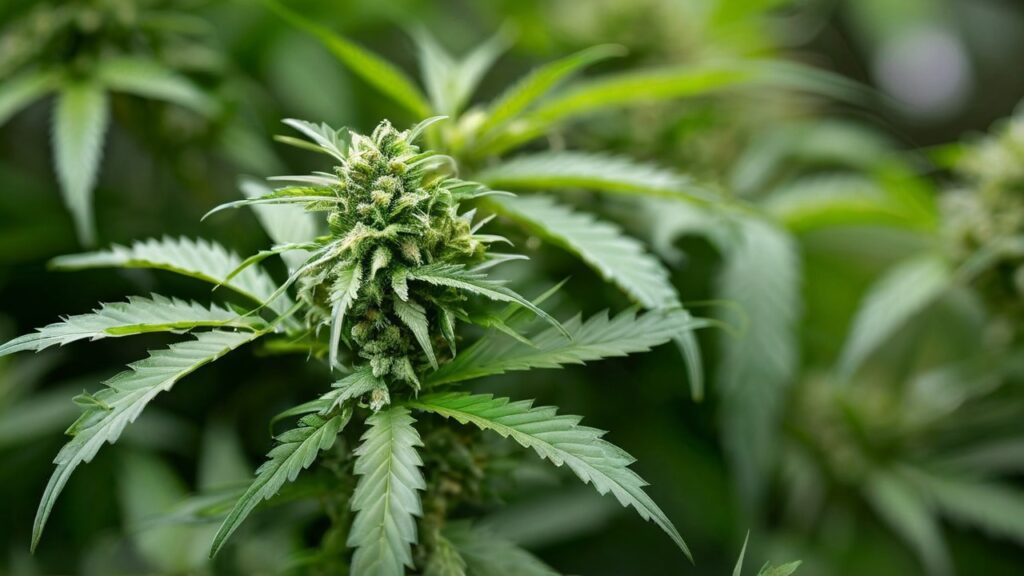Introduction
Indian hemp plants are found growing naturally all over India, especially in Uttar Pradesh, Bengal and Bihar. The leaves of male plants are dried to prepare bbang and the resinous flowers of female plants are dried to prepare gangia. The resin which is deposited on the leaves and branches of the plant is known as cheras.
Chemical Composition
It contains a sweetish brownish coloured resin, known as cannabinol. It contains a sticky, red coloured thick oil which becomes resinous in open air. In addition, the Indian hemp also contains gum, sugar, a volatile oil and minerals like calcium phosphate.
Properties
It cures cough, has binding properties, and promotes digestion. It is bitter, light and has a penetrating warmth.
It enhances piltla, cures indigestion, promotes body and is intoxicating. Seeds are binding in nature and com vomiting and loose motions.

Uses of Indian Hemp :
Indian hemp, also known as Apocynum cannabinum or dogbane, is a plant native to North America that has been historically used in traditional medicine by Indigenous peoples. It’s important not to confuse Indian hemp with Cannabis sativa, commonly referred to as hemp or marijuana, which belongs to a different plant family and has distinct uses.
1. Cardiovascular Health
- Heart Conditions: Historically, Indian hemp has been used as a cardiac tonic to treat heart failure or other heart conditions, similar to how digitalis (from the foxglove plant) is used. Its primary active compounds, such as cymarin, are known to affect heart function by acting as a cardiac glycoside.
2. Diuretic Properties
- Indian hemp has been used to increase urine output, making it useful for conditions like edema (swelling due to fluid retention) and hypertension (high blood pressure).
3. Rheumatism and Arthritis
- Traditional applications involved using the plant to treat rheumatism and joint pain. Preparations of Indian hemp were sometimes applied externally as poultices to relieve pain and inflammation in the joints.
4. Respiratory Ailments
- It has been used for treating coughs, colds, and asthma. The root extract was believed to have antitussive (cough suppressant) properties and could help in clearing mucus.
5. Digestive Disorders
- The plant has been used as a remedy for constipation and other digestive issues. It was known to act as a laxative when administered in certain preparations.
6. Anthelmintic (Anti-Parasitic)
- Indian hemp has been used to help expel intestinal parasites or worms from the body. Its extracts were traditionally given as a treatment for parasitic infections.
7. Topical Uses
- Wound Healing and Skin Conditions: Some Native American tribes applied Indian hemp topically to treat sores, rashes, and wounds. It was believed to promote healing and reduce infections.
Safety and Toxicity:
Indian hemp contains toxic substances, particularly cymarin, which can be dangerous in high doses. Its toxicity is particularly concerning for the heart, as it can cause serious side effects like heart arrhythmias. As such, medicinal use of Indian hemp should be approached with caution and ideally under professional supervision.
Modern Use:
Despite its traditional uses, Indian hemp is not commonly used in modern herbal medicine, partly due to its potential toxicity and the availability of safer, more effective alternatives.
Ear pain: Pur 8-10 drops of its juice in the ears. It kills any germs/worms and cures ear pain.
Sleeplessness: Indian hemp ensures complete and deep sleep. In situations where due to intake of poppy, patient suffers from sleeplessness, consuming Indian hemp helps. Its consumption does not lead to stiffness and headache.
Headache:
- Grind its leaves and inhale. It cures headache.
- Heat the juice of its leaves and then put 2-3 drops in the ears. It cures headache due to excessive cold or heat
